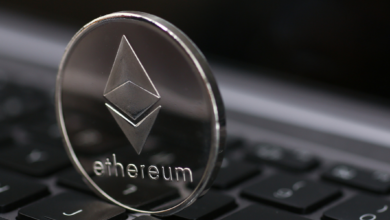Are DAO’s the new smart money in crypto? What is smart money and what does it have to do with CRYPTO?

What is “Smart Money?”
Smart money is cash invested or wagered by those considered experienced, well informed, “in-the-know,” or all three. There is little empirical evidence to support the notion that smart-money investments perform better than non-smart-money investments; however, such influxes of cash influence many speculation methods.
The term, “smart money” comes from gamblers that had a deep knowledge of the sport they were betting on or insider knowledge that the public was unable to tap into. The investing world is similar. The populace perceives that the smart money is invested by those with a fuller understanding of the market or with information that a regular investor cannot access. As such, the smart money is considered to have a much better chance of success when the trading patterns of institutional investors diverge from retail investors.
In crypto, the smart money isn’t hedge funds or asset managers.
It’s DAOs!
To many of the young entrepreneurs and crypto enthusiasts, DAOs may seem like a radical shift in organizational power structures.
No boss? Getting paid in native tokens? Voting on decisions?
Could this actually work?
These are crypto native entities with massive war chests. They have some of the smartest crypto-minded people in the world working for them and managing their treasuries. These crypto natives are the earliest money into rising tokens.
This emerging force is DAOs.
A part of the larger trend of “DaoFi,” which refers to the emergence of DAOs as DeFi users and investors, DAOs are a class of DeFi investors that have shown themselves to be among the earliest money to certain tokens.
The idea of DAOs as smart money makes sense. They are DeFi native entities with massive war chests, run by some of the smartest people in the world, and collectively possess an incredibly high level of expertise.
A defining and obvious example of DAOs as smart money is the CRV and CVX token’s War. For those who are not familiar, beginning in Q2 2021 protocols such as Yearn Finance, StakeDAO, and Convex Finance raced to accumulate and lock CRV tokens. These locked tokens, in the form of veCRV, give their holders the right to earn boosted rewards when providing liquidity on Curve, as well as the right to vote on the direction of CRV emissions.

Convex quickly won this battle, stockpiling a plurality of CRV. The crosshairs then shifted to CVX, as holders are entitled to meta-governance rights over the CRV held by Convex.
CVX is now sitting in twenty DAO treasuries.
While it is widely known that these wars have been fought by DAOs, what has been less discussed is the cost basis at which they began their accumulation.

As we can see from the table above, DAOs began stockpiling both CRV and CVX at substantially lower prices than what they are trading at today.
These gains come even after both assets have seen 50%+ drawdowns from their January 2022 peaks. An interesting wrinkle to this is that these moves took place in broad daylight, available for anyone to see in real-time on governance forums, Twitter, and of course, on-chain.
These DAOs could’ve been easily copy-traded.
Although the sample size is small, the takeaway is clear: DAO purchases are a source of signal and alpha for investors.
For this analysis, we’ll be taking a look at ten different treasuries of DeFi DAOs.
It is near-impossible to get every DAO on this list, as there are hundreds on Ethereum with incredibly smart and talented contributors. However, these ten represent a diverse mix based on their size, their confirmed interest in acquiring various governance tokens, and their motivations for doing so.
The assets listed in the table below exclude common treasury assets such as ETH, BTC, Stablecoins, LP-tokens, and native tokens, and include holdings that are currently larger than $20,000. It is also worth pointing out that these assets were acquired through several different means, whether it be through open market purchases, farming rewards, token-swaps, or seed round allocations.
These ten DAOs have been organized into three main groups:
1. Service Providers:
These DAOs are accumulating governance tokens in order to enhance the quality of their products for users, such as by providing boosted yields. The DAOs used for this analysis that fit this description are Convex Finance, StakeDAO, and BadgerDAO.
2. Reserve Asset Issuers:
These protocols are issuing a reserve asset of some kind, whether it be fiat-pegged, or one that has a floating exchange rate. These DAOs are stockpiling various tokens for either use as collateral, for meta-governance rights, and/or to direct liquidity to their issued token. The DAOs selected that fall within this category are Frax Finance, Olympus DAO, Tribe DAO, and Alchemix Finance.
3. Governance DAOs:
These DAOs are stockpiling tokens with the intention of accumulating governance power and influence in different strategically important protocols. These include [Redacted] Cartel, Lobis, and Congruent Finance.

As we can see, there are 26 unique assets held across the ten DAOs on our list, with each DAO holding at least two non-native governance tokens in their treasuries.
Breaking the data down by asset, we can see that unsurprisingly, the most commonly held asset is CVX, which sits in six treasuries, and CRV, which is in five. They are two of the just four assets that are held by all three types of DAOs.
Moving down the list, the next most commonly held assets are FXS, TOKE, and ANGLE at four. TOKE is held by reserve asset and governance DAOs, while FXS and ANGLE sit in the treasuries of both those and service providers.
DAOs are DeFi’s smart money. And they are on the move. As we’ve seen, these DeFi-native entities are holding and accumulating far more than just CRV, setting their sights on many other strategically important assets.
They say to follow the money…
Is there any money smarter than that of DeFi gigabrains?

At the time of this article the writers were actively using Coinbase, FTX, Metamask, Trust Wallet, Crypto.com, Binance, Robinhood, Webull, KuCoin, Voyager and Hotbit. They also own currencies: BTC, ETH, USDC, SOL, AVAX, ALGO, MATIC, CRO, ENS, DOT, XLM, MANA, RARI, ENJ, XRP, FIL, SAND, HNT.






